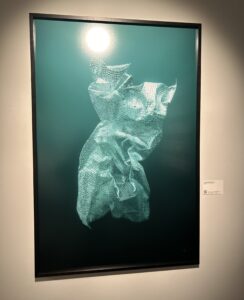Hello, my name is Amelia Pluth and I am a junior at GAC, welcome to my blog! Today in Reykjavik, we were fortunate enough to be able to explore the various museums of the city. The museums I have gone to include the National Museum of Iceland, The House of Collections, The Icelandic Phalloogical Museum, and the Maritime Museum.
The National Museum of Iceland displayed a wide history of the nation, all the way back to before it gained its independence. The museum is particularly notable in tourism because there is more of a true sense of cultural authenticity within the displays, compared to the over-exaggeration of culture within advertising in tourism for profit. “A new tension has emerged in Iceland between those who have hitched their wagon to the ascendant force of tourism and those who have been either left behind, or simply identify tourism as a corrosive pressure on Icelandic culture and tradition.” (Iceland and the Trials of 21st Century Tourism, Andrew Sheivachman) It is important to keep these perspectives in mind as you explore these places in Iceland and to draw out the impact tourism has on them culturally, as the very nature of how Icelanders are perceived is warped by the need to “sell” the country to travelers.
In the National Museum, there is very little notion of the “Viking” image that people often associate with Iceland. In the museum, there was only one thing written about the Vikings, and it proceeded to refer to them as farmers and settlers instead (pictured below). This is nothing like the blown-up image we see thrown at us to further develop the attraction of tourists and it keeps an authentic view of the history and culture of Icelanders.
Moving to The House of Collections, there is a sense of cultural authenticity through the creation of art and how Icelandic artists express themselves using various artistic mediums. Throughout the building, there are themes for the different floors relating them back to the Icelandic landscape (pictured below), which is something that Icelanders hold very close to themselves. “In Iceland, people are engaged in a never-ending conversation with nature, and it is in that sense that we may say that the mountains speak to people.” (Icelandic Topography and the Sense of Identity, Kirsten Hastrup) This connects to the Maritime Museum as well, as they both contain messages about protecting the environment and doing our best to sustain it.
The Maritime Museum mainly reflects on Iceland’s fishing culture, which used to be the largest economic contributor in the country before the recession that occurred in 2008 where in recovery tourism came to be an economic backbone of Iceland. The museum had a heavy emphasis on human impacts on the ocean, especially that of litter and how much of our trash unfortunately ends up in the oceans.
On the way back from our museum ventures, my classmate and I had a bit of an ordeal occur today. We boarded a bus and were going to connect to another one at a subsequent stop to get back to our hostel. This went differently than we had planned. As it turned out the bus that we boarded was actually going in the wrong direction, and we ended up very far from our hostel. Although this was not ideal there was a sense of authenticity that we wouldn’t have gotten otherwise. On this bus ride, we got to experience a whole group of students entering the bus, and the bus was absolutely packed with people with all sorts of Icelandic conversations occurring around us. We got to watch the way the Icelanders interact with each other and the world around them in a way we otherwise wouldn’t have if we hadn’t got on the wrong bus. I am excited to continue to learn more about the culture and how tourism impacts just about every facet of the country.



